Volcanism
Volcanism refers to the process of magma and volcanic gases rising to the Earth's surface. This process results in the formation of volcanic landforms such as volcanoes, volcanic mountains, and lava plateaus. Volcanism is an important geological process that has shaped the Earth's surface and continues to have a significant impact on the environment.
Types of Volcanoes
There are several types of volcanoes, each with distinct characteristics:
- Shield Volcanoes: These volcanoes have broad, gently sloping sides and are primarily built by the flow of low-viscosity lava. They are typically not very explosive.
- Stratovolcanoes: Also known as composite volcanoes, stratovolcanoes are tall, steep-sided cones built by thick lava flows alternating with layers of ash and other volcanic materials. They are known for their explosive eruptions.
- Cinder Cone Volcanoes: These are the simplest type of volcano, consisting of a steep conical hill of volcanic debris that accumulates around a vent.
Volcanic Eruptions
Volcanic eruptions can be classified as either explosive or effusive:
- Explosive Eruptions: These eruptions are characterized by the violent ejection of volcanic materials, such as ash, rocks, and gases. They can result in significant destruction and have the potential to affect the global climate.
- Effusive Eruptions: These eruptions involve the relatively gentle outpouring of lava onto the Earth's surface. They are typically associated with shield volcanoes and result in the gradual building of volcanic landforms.
Study Guide
Here are some key concepts to understand when studying volcanism:
- Describe the process of volcanism and the formation of volcanic landforms.
- Identify and compare the different types of volcanoes, including shield volcanoes, stratovolcanoes, and cinder cone volcanoes.
- Explain the differences between explosive and effusive volcanic eruptions, and provide examples of volcanoes associated with each type of eruption.
- Discuss the impact of volcanic eruptions on the environment, climate, and human societies.
By understanding the various aspects of volcanism, you will gain insight into this important geological process and its significance in shaping the Earth's surface.
.◂Science Worksheets and Study Guides Fourth Grade. Introduction to animals
Study Guide Introduction to animals
Introduction to animals  Worksheet/Answer key
Worksheet/Answer key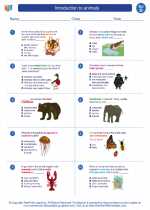 Introduction to animals
Introduction to animals  Worksheet/Answer key
Worksheet/Answer key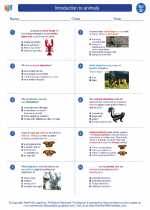 Introduction to animals
Introduction to animals  Worksheet/Answer key
Worksheet/Answer key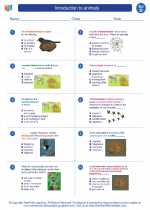 Introduction to animals
Introduction to animals  Vocabulary/Answer key
Vocabulary/Answer key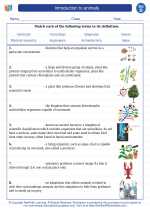 Introduction to animals
Introduction to animals  Vocabulary/Answer key
Vocabulary/Answer key Introduction to animals
Introduction to animals  Vocabulary/Answer key
Vocabulary/Answer key Introduction to animals
Introduction to animals  Vocabulary/Answer key
Vocabulary/Answer key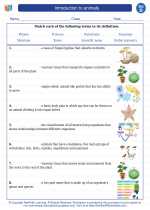 Introduction to animals
Introduction to animals 

 Worksheet/Answer key
Worksheet/Answer key
 Worksheet/Answer key
Worksheet/Answer key
 Worksheet/Answer key
Worksheet/Answer key
 Vocabulary/Answer key
Vocabulary/Answer key
 Vocabulary/Answer key
Vocabulary/Answer key
 Vocabulary/Answer key
Vocabulary/Answer key
 Vocabulary/Answer key
Vocabulary/Answer key

The resources above cover the following skills:
Concepts of Life Science (SC1, SC2, SC3)
The student demonstrates an understanding of how science explains changes in life forms over time, including genetics, heredity, the process of natural selection and biological evolution by showing the relationship between physical characteristics of Alaskan organisms and the environment in which they live.